Are Lake Erie's algae blooms home to the next pharmaceutical drug? Some scientists think so.
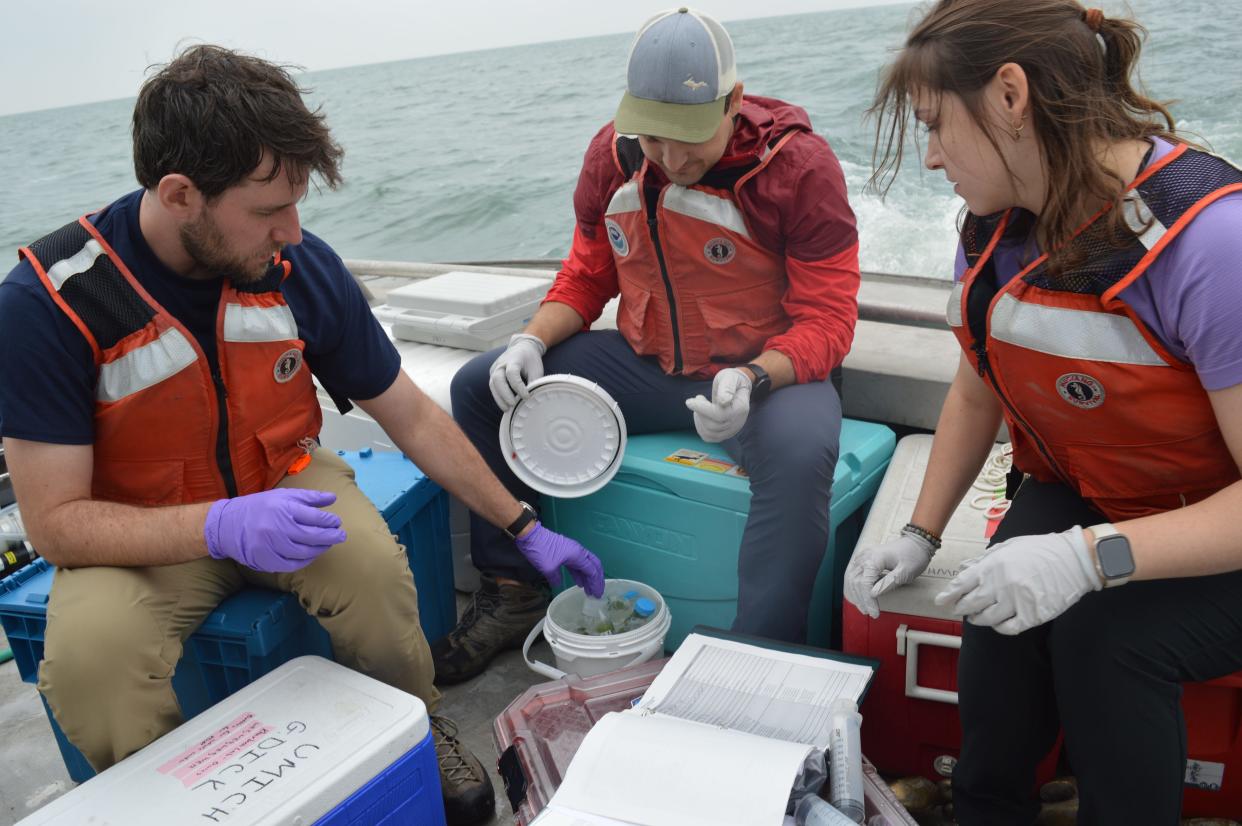
Blue-green algae blooms paint Lake Erie’s waters bright green for hundreds of square miles every summer. The notorious scummy blooms release toxins that threaten drinking water, put beachgoers at risk, foul coastlines, and impact people and businesses that rely on the lake.
These toxic blooms are a public health risk. But some scientists think they may be home to the next pharmaceutical drug.
The blooms are “a treasure trove of molecules” both good and bad, said Colleen Yancey, a graduate of the University of Michigan Earth and Environmental Sciences program. Yancey was a part of a team of researchers at the University of Michigan that is scavenging for antibiotics and anticancer drugs in Lake Erie’s harmful algae blooms.
They are full of information waiting to be tapped into, Yancey said.
So, what causes Lake Erie’s algae blooms? Why do scientists think they might find a new drug in the blooms? And have they been successful in the past? Here’s what to know.
What are harmful algae blooms?
Blue-green algae form blooms when plentiful nutrients, like phosphorus and nitrogen, pollute water, feeding the algae and causing them to reproduce rapidly. Explosive algae growth is particularly common in warm, stagnant water as well as near agricultural land where fertilizers, heavy in phosphorus, run off into nearby waters.
While these blooms are typically called blue-green algae, they are not technically algae, they are cyanobacteria. Some cyanobacteria release toxins, which is why some blooms are called harmful algae blooms. The most commonly known cyanobacteria that produce harmful blooms are called microcystis, which produce the toxin microcystin. These toxins cause gastrointestinal illness and can damage the liver and kidneys.
When algae blooms die off they can suck the oxygen out of the water and create dead zones where fish, aquatic plants and other organisms cannot survive.
Could algae blooms produce helpful drugs?
It may seem “pie in the sky” to look for new drugs in Lake Erie’s blooms, but Yancey said most pharmaceuticals come from natural products from microbes and plants.
For instance, aspirin was derived from a compound for a willow tree; morphine and codeine come from poppy plants; penicillin comes from a kind of mold; and azithromycin – commonly called Z-Pak – comes from a bacterium. Many anticancer drugs are also derived from compounds produced by microbes, like bleomycin.
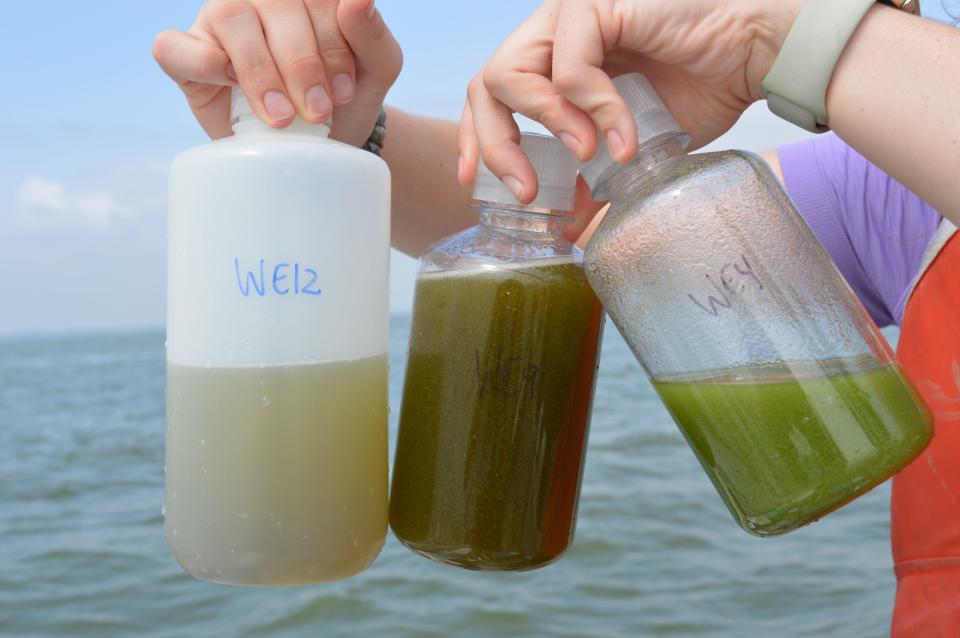
Competition is fierce in Lake Erie’s algae blooms, said Gregory Dick, director of the Cooperative Institute of Great Lakes Research, who researches microbes in the Great Lakes.
The cyanobacteria are tightly packed together, so it’s likely that these microbes are producing toxins to inhibit or kill each other, he said.
Scientists chase blooms and collect water samples
Dick has teamed up with David Sherman, a colleague at the University of Michigan whose research focuses on finding potential drug candidates in nature. They started looking for potential drug candidates in Lake Erie roughly five years ago. Yancey, who now works for a biotechnology company in Boston, helped jumpstart the hunt for a new drug in the lake.
From June to October, the team goes out once a month on research cruises led by the National Oceanic and Atmospheric Administration. The blooms change seasonally, Dick said, so the cyanobacteria present early in the summer are different strains than those present during the peak blooms in August and September. Capturing these seasonal differences may help their chances of finding promising molecules.
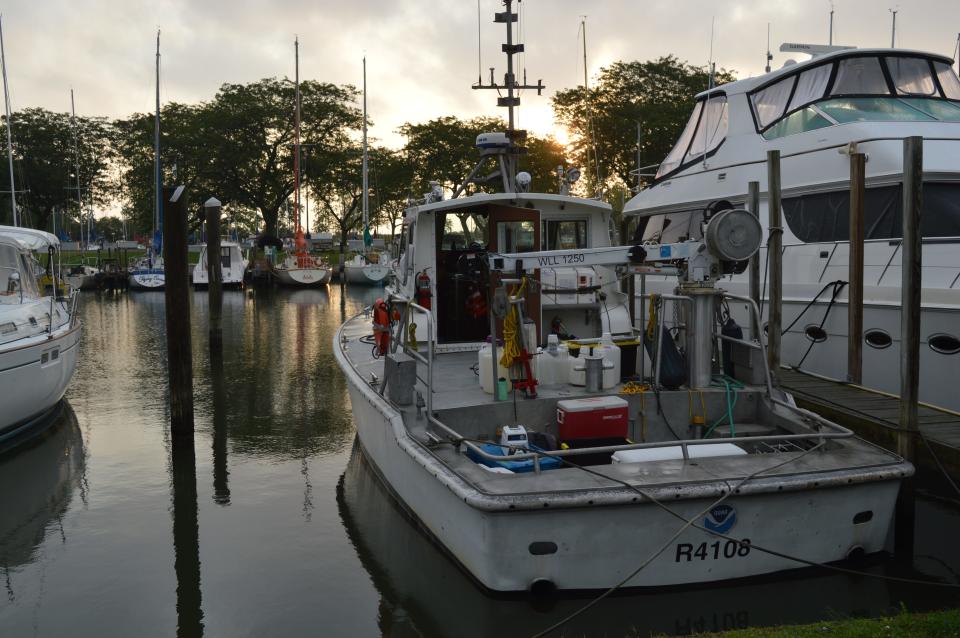
The scientists will “chase the bloom” to collect water samples, said Lauren Hart, a graduate student currently working in Dick’s lab. Then, they take the samples back and look at genes to see what kind of cyanobacteria are there and what they are doing. They also look at all the molecules present in the samples.
It’s like putting together a giant puzzle one piece at a time, Hart said.
The team found an anticancer drug in the Caribbean now in clinical trials
As a part of another research project, Dick and Sherman found an anticancer drug that is now in clinical trials. The potential drug is released by a sea squirt that lives on the roots of mangrove trees in the Caribbean. The compound is produced by bacteria that live on the immobile sea squirt, helping defend it against other organisms.
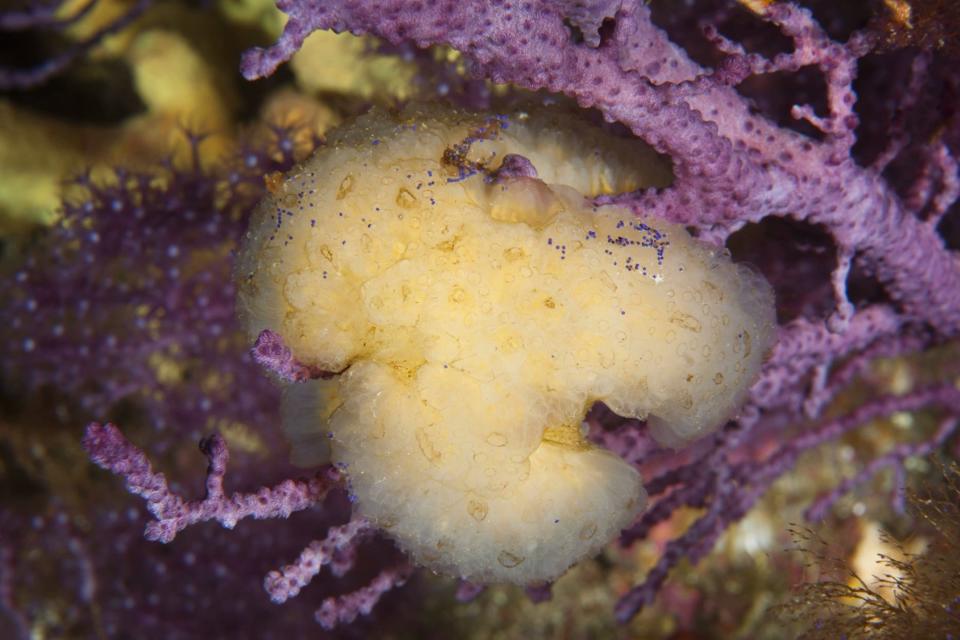
There are lots of examples of pharmaceuticals derived from marine environments, but exploring the Great Lakes for pharmaceuticals is a new frontier, Dick said.
Dick said they have found some promising genes so far, which were published in a scientific journal in 2022. Hart is continuing this work, running tests to see if molecules they have found inhibit the growth of other microbes and cancer cells.
But both Dick and Yancey caution that it can take many years to discover a promising candidate, if at all.
“It’s not an aha moment,” Dick said. “It's more like a series of smaller aha moments.”
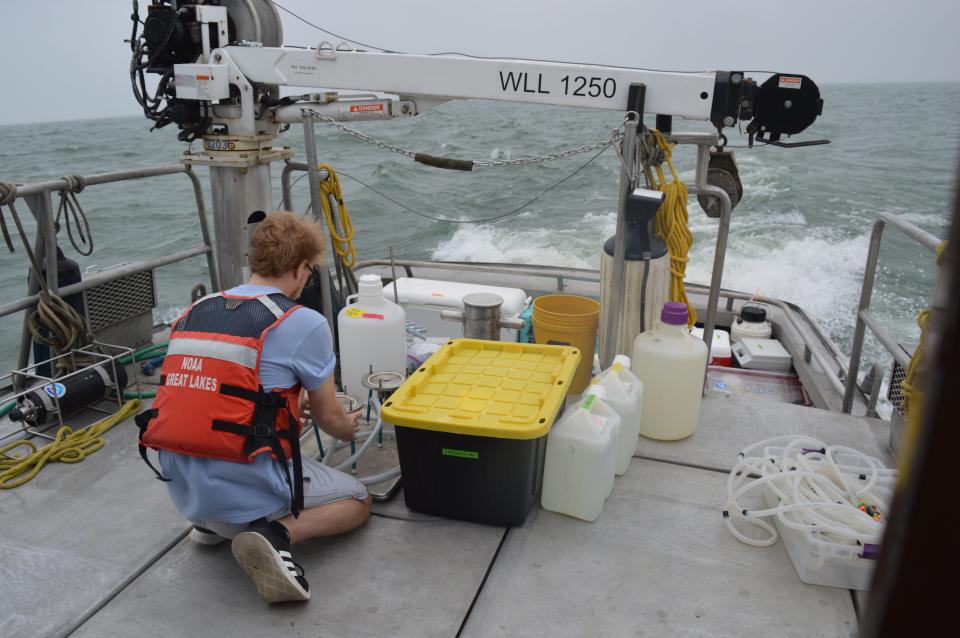
A potential drug isn’t quite a silver lining
Lake Erie’s summertime toxic blooms are becoming more intense as climate change warms the lake.
Algae blooms are also a frequent occurrence in the bay of Green Bay and Saginaw Bay in Lake Huron, and many inland lakes throughout the region. These blooms are even starting to crop up in Lake Superior. And while it's not the same kind of cyanobacteria causing these blooms and they are not releasing toxins like the Lake Erie blooms, scientists are concerned the explosive growth may be caused by climate change.
Even though a potentially good thing may come from these harmful blooms, Dick said it doesn’t change that the blooms are still a bad thing.
In doing this research the scientists have found new toxins that should be monitored moving forward, Yancey said.
“There's a lot of nuanced complexity… and we're starting to scratch the surface,” she said.
More: Water quality issues challenge what it means to 'leave no trace' in beloved Boundary Waters
Caitlin Looby is a Report for America corps member who writes about the environment and the Great Lakes. Reach her at clooby@gannett.com or follow her on X @caitlooby.
Please consider supporting journalism that informs our democracy with a tax-deductible gift to this reporting effort at jsonline.com/RFA or by check made out to The GroundTruth Project with subject line Report for America Milwaukee Journal Sentinel Campaign. Address: The GroundTruth Project, Lockbox Services, 9450 SW Gemini Dr, PMB 46837, Beaverton, Oregon 97008-7105.
This article originally appeared on Milwaukee Journal Sentinel: Scientists search for lifesaving drugs in Lake Erie algae blooms

